3 Times the ‘Nuclear Hotline’ Stopped World Superpowers From Going To War
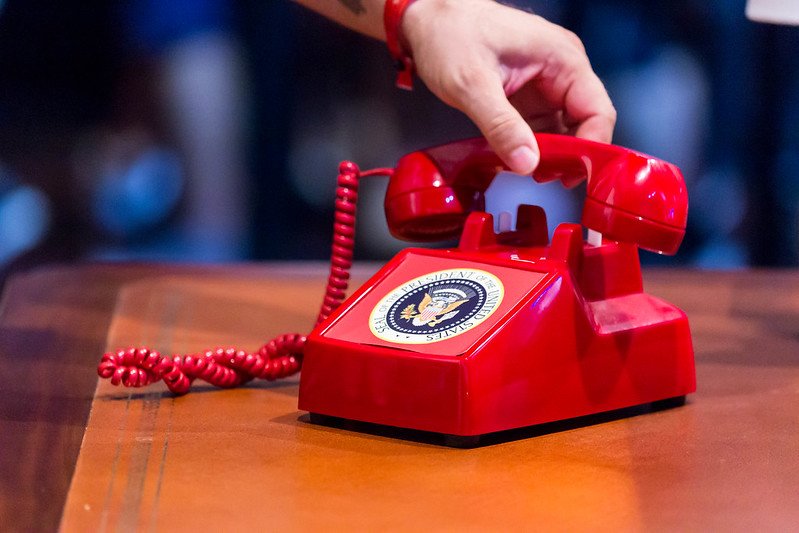
The red “Bat Phone” to call Russia in case of emergency was never actually a phone. Photo courtesy of Marco Verch at https://foto.wuestenigel.com.
The popular nickname for the direct phone line between the President of the United States of America and his counterpart in Moscow is the “Nuclear Hotline,” but among those in the know, it’s called the MOLINK — short for Washington-Moscow Direct Communications Link, or the Moscow Link.
Though it’s been portrayed in movies as a Bat Phone-style telephone link — often bright red — that’s not even close. It’s not a voice telephone line at all; the link is text only, to avoid a spoken mistranslation or misunderstanding.
Spanning 10,000 miles of communication cable, the link begins in Washington and travels through relays across the Atlantic Ocean to Europe, through London, Copenhagen, Stockholm, Helsinki, and, finally, Moscow.
When the system was built between the two capitals during the Cold War, it led to an unconventional collaboration between engineers in both countries, who exchanged spare parts, tips for fixes, operating instructions, and telecommunication tapes.
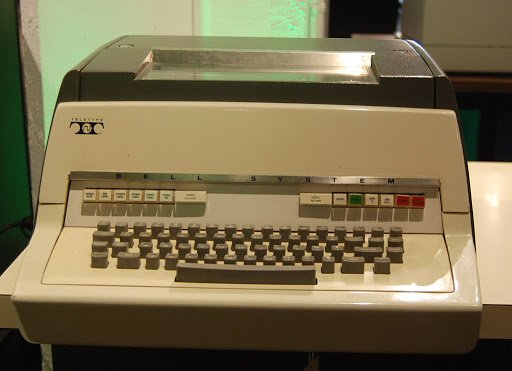
Originally a clattering teletype machine, today the “hotline” is a secure email system.
A link between Moscow and Washington was suggested in 1960, in Parade Magazine, when editor Jess Gorkin asked, “Must a world be lost for the want of a telephone call?”
But the real need for a link became clear during the 13-day standoff in 1962 known as the Cuban Missile Crisis when delays and misunderstood communications between Soviet Premier Nikita Khruschev and President John F. Kennedy brought the two countries perilously close to a nuclear exchange. In a dark historical irony, Kennedy’s name is tied to the MOLINK in two ways: Not only did he order it built, but the topic of its first operational message was Kennedy’s assassination in Dallas on Nov. 22, 1963.
On the anniversary this week of the agreement that launched MOLINK, here are three times the communications system stopped a war between the superpowers.
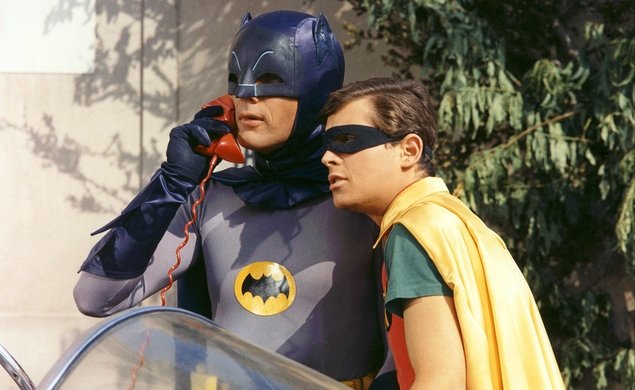
The Six-Day War
After testing, the MOLINK would prove its worth during the Israel-Egypt conflict known as the Six-Day War in 1967, when Israel seized large swaths of territory from Syria, Egypt, and Jordan, including the Golan Heights, the Sinai Peninsula, the Gaza Strip, and the West Bank.
But on June 8, 1967, Israel accidentally fired on a US electronic surveillance ship, the USS Liberty, killing 34 sailors and injuring 171 others. US officials worried that rescue forces steaming toward the Liberty would be viewed as hostile by Russian vessels in the area. About 20 messages were relayed between President Lyndon B. Johnson and Soviet Premier Alexei Kosygin as US officials assured their Soviet counterparts that the Liberty rescue was not an escalation.
LBJ was a fan of MOLINK, sending updates to the Soviets during the Apollo 8 mission, which orbited the moon in 1968.
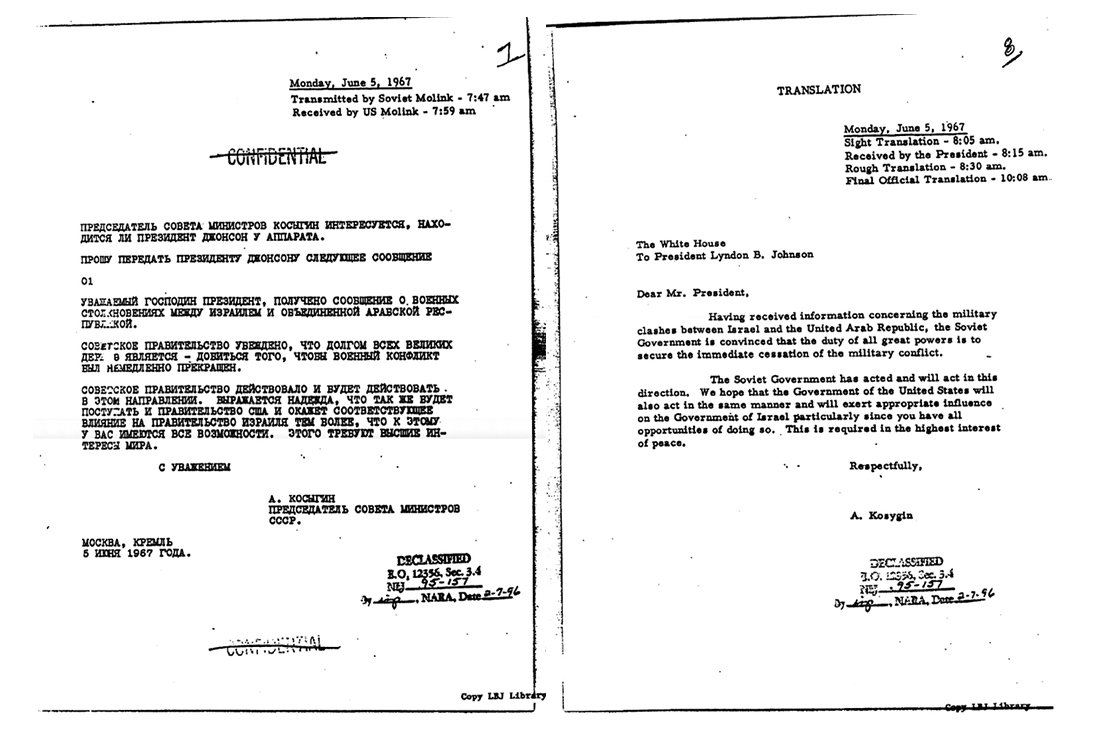
Nixon and the Indo-Pakistani Crisis
India and Pakistan erupted in full-scale war in December 1971. While President Richard Nixon sided with Pakistan and its president, Yahya Khan, the Soviet Union backed India. As tensions and casualties grew, Nixon used the MOLINK to take a hard line with the Soviets, warning, “If the Indians continue their military operations, we must inevitably look toward a confrontation between the Soviet Union and the United States.”
With the situation on the ground rapidly deteriorating by Dec. 16, 1971, Nixon was losing optimism over the effectiveness of the MOLINK, expressing his doubt to his secretary of state, Henry Kissinger. Later that same afternoon, however, Pakistan surrendered. The MOLINK had worked by buying time between the superpowers.
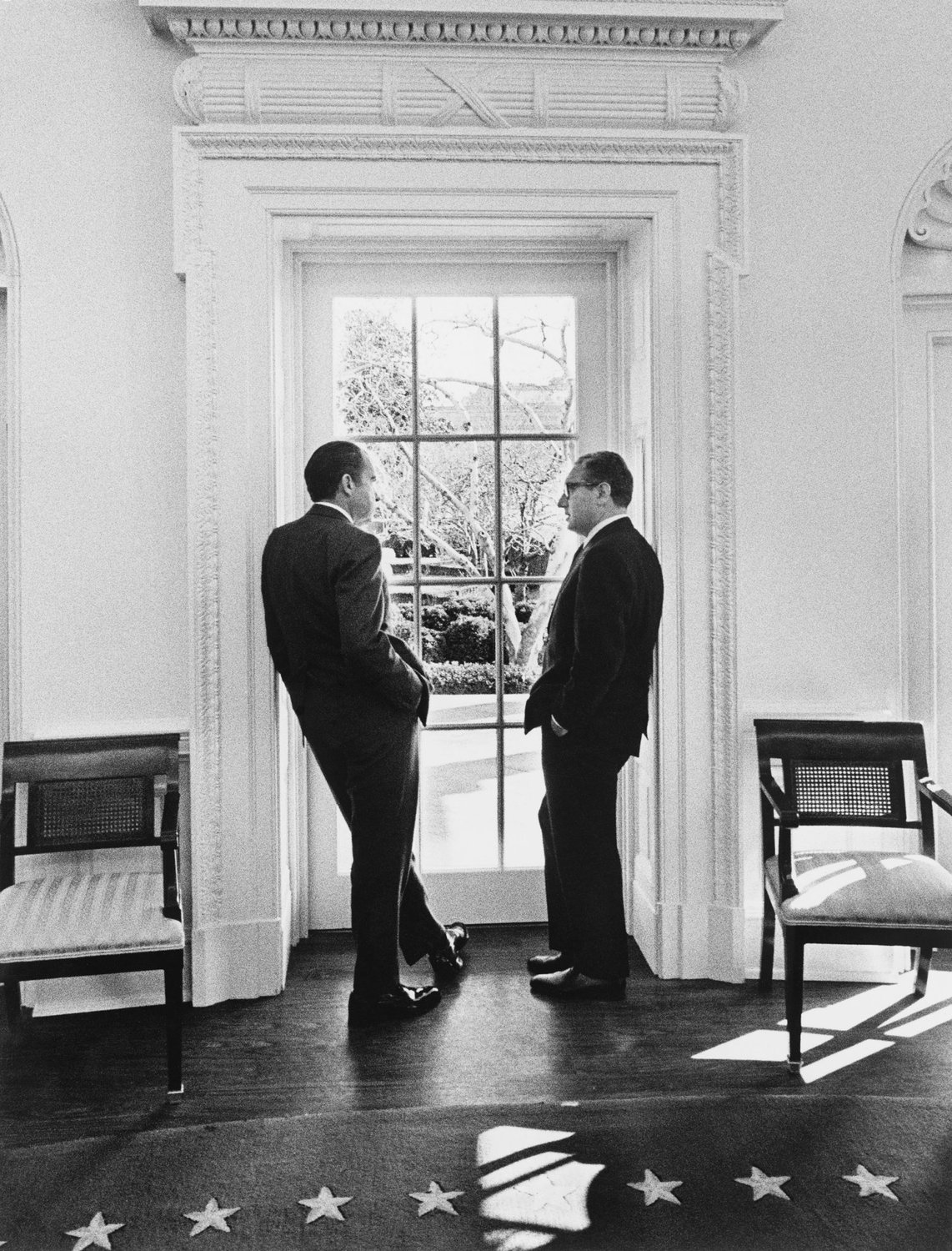
Soviet Near-Invasion of Poland
Having invaded Afghanistan only two years before, the threat of a Soviet invasion of Poland loomed in 1981 as a democratic movement took hold in the eastern European nation. President Ronald Reagan used the MOLINK to tell the Kremlin to sit out Poland’s internal issues. “Washington warned the Kremlin via the hot line in early December of the gravest consequences that such troop movements would incur,” historian John S. Micgiel wrote in 1997.
Since the establishment of the Washington-Moscow communications link, other links have been established between governments around the world, including those in India, China, Taiwan, North Korea, and South Korea.
On the MOLINK’s anniversary and New Year’s Eve every year, small greetings are exchanged, but the age of the direct communications line has given way to the age of the internet. President Barack Obama once joked that, with the invention of Twitter, “We may be able to finally throw away those red phones that have been sitting around for so long.”
Read Next: 4 Declassified Facts About Lockheed Martin’s Legendary ‘Skunk Works’

Lauren Coontz is a former staff writer for Coffee or Die Magazine. Beaches are preferred, but Lauren calls the Rocky Mountains of Utah home. You can usually find her in an art museum, at an archaeology site, or checking out local nightlife like drag shows and cocktail bars (gin is key). A student of history, Lauren is an Army veteran who worked all over the world and loves to travel to see the old stuff the history books only give a sentence to. She likes medium roast coffee and sometimes, like a sinner, adds sweet cream to it.
BRCC and Bad Moon Print Press team up for an exclusive, limited-edition T-shirt design!
BRCC partners with Team Room Design for an exclusive T-shirt release!
Thirty Seconds Out has partnered with BRCC for an exclusive shirt design invoking the God of Winter.
Lucas O'Hara of Grizzly Forge has teamed up with BRCC for a badass, exclusive Shirt Club T-shirt design featuring his most popular knife and tiomahawk.
Coffee or Die sits down with one of the graphic designers behind Black Rifle Coffee's signature look and vibe.
Biden will award the Medal of Honor to a Vietnam War Army helicopter pilot who risked his life to save a reconnaissance team from almost certain death.
Ever wonder how much Jack Mandaville would f*ck sh*t up if he went back in time? The American Revolution didn't even see him coming.
A nearly 200-year-old West Point time capsule that at first appeared to yield little more than dust contains hidden treasure, the US Military Academy said.












